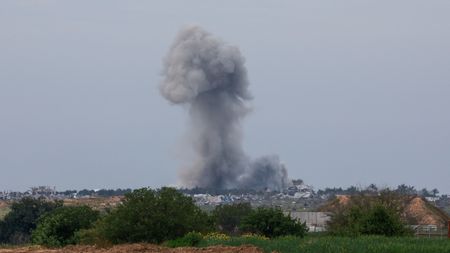(Reuters) – Israel’s war against Hamas in Gaza has killed thousands, caused a humanitarian catastrophe and raised the chances of a wider conflict across the Middle East.
Here are some facts about the territory:
WHAT IS THE GAZA STRIP?
The Gaza Strip is situated at the southeast corner of the Mediterranean, 45 km (25 miles) long and at most 10 km (6 miles) wide. It is wedged between Israel to the north and east, and Egypt’s Sinai Peninsula to the south.
Formerly part of British-mandate Palestine, the Gaza Strip emerged as a territory during the 1948 war of Israel’s creation, when invading Egyptian forces established control over the sliver of territory.
Israel occupied the Gaza Strip in the 1967 Middle East war, along with the West Bank. The Palestinians have long sought to establish a state in the Gaza Strip and the West Bank, with East Jerusalem as its capital.
WHO LIVES IN GAZA?
About 2.3 million Palestinians live in Gaza, giving it one of the highest population densities in the world. Some 1.7 million of them are refugees or descendants of refugees who were expelled or fled their homes during the 1948 war.
Even before the latest war erupted, some 81.5% of the population lived in poverty, according to the U.N. agency for Palestinian refugees UNRWA.
HOW DID WE GET HERE?
In 1987, Palestinians in the Gaza Strip and the West Bank rose up against Israeli occupation in the first Intifada.
In 1993, the Palestine Liberation Organization and Israel signed a historic peace agreement, paving the way for limited Palestinian self-rule in the Gaza Strip and the West Bank. The newly created Palestinian Authority cracked down on opponents of the peace process, including the Islamist group Hamas.
Gaza was a theatre of the Second Intifada which erupted after the failure of peace talks in 2000. Israel withdrew settlers and soldiers from the territory in 2005, but continued to control its land and sea borders – bar the crossing to Egypt.
In 2006, Hamas scored a surprise victory in Palestinian parliamentary elections and seized full control of Gaza, overthrowing forces loyal to Palestinian President Mahmoud Abbas.
Israel and Egypt tightened restrictions on the movement of people and goods through the Gaza crossings.
Palestinian militants in Gaza have fought numerous conflicts with Israel since then, including a 50-day war in 2014. Confrontations have been largely defined by Palestinian rocket fire into Israel and Israeli air and artillery bombardments of the Gaza Strip.
The latest war erupted on Oct. 7, when Hamas militants raided southern Israel, killing 1,200 people and abducting some 250 others, according to Israeli tallies.
HOW BAD IS THE HUMANITARIAN SITUATION?
The Health Ministry in Gaza said the Israeli air and ground campaign had killed more than 31,988 people and injured 74,188 by March 21. The ministry has said children under 18 make up more than 40% of those killed.
UNRWA said as of March 16 up to 1.7 million people, or over 75% of the population, had been displaced since Oct. 7, some of them several times. More than 1 million displaced are in Rafah on Gaza’s southernmost fringe close to the boundary with Egypt.
More than 60% of housing units have been destroyed, along with 392 education facilities, 123 ambulances and 184 mosques, it said.
Mains electricity stopped working in October.
Children are dying of starvation in northern Gaza, World Health Organization chief Tedros Adhanom Ghebreyesus said on X on March 4, citing a WHO team that visited two hospitals.
Famine is imminent and likely to occur by May in northern Gaza and could spread across the enclave by July, the world’s hunger watchdog, known as the Integrated Food-Security Phase Classification (IPC), said on March 18.
It said 70% of people in parts of northern Gaza were suffering the most severe level of food shortage, more than triple the 20% threshold to be considered famine. In all, 1.1 million Gazans, about half the population, were experiencing “catastrophic” shortages of food.
The healthcare system in Gaza has essentially collapsed, Western doctors who visited the Palestinian enclave in recent months told an event at the United Nations on March 19.
UNRWA said on Feb. 22 that only 12 hospitals were still partially functioning in Gaza and that there were more than 300,000 reported cases of acute respiratory infections and more than 200,000 reported cases of watery diarrhoea.
Satellite images analysed by the U.N. Satellite Centre show that 35% of the Gaza Strip’s buildings have been destroyed or damaged in the Israeli offensive, the centre said on March 21.
(Compiled by Tom Perry and Angus McDowall; Editing by Ros Russell, William Maclean and Timothy Heritage)
